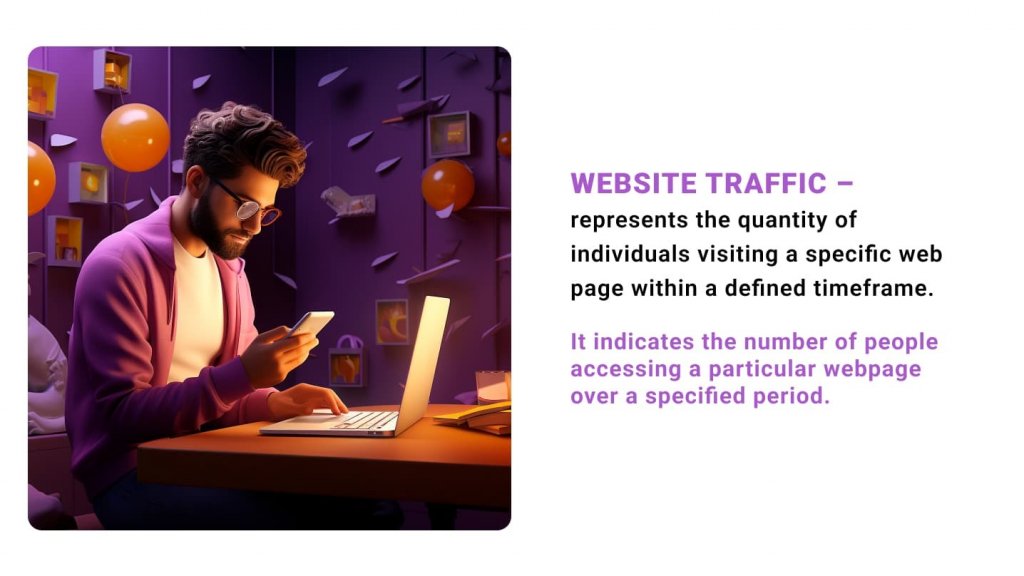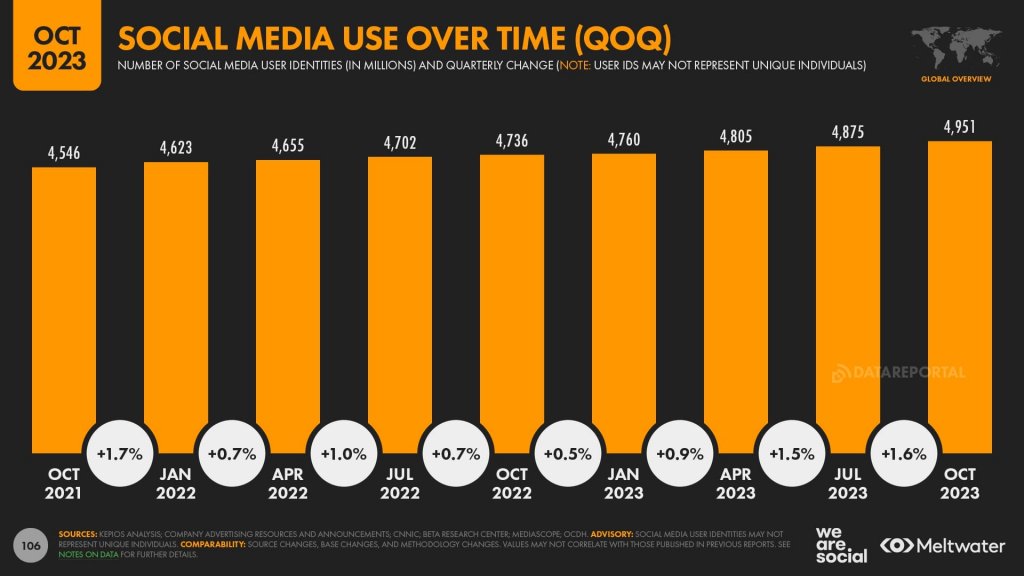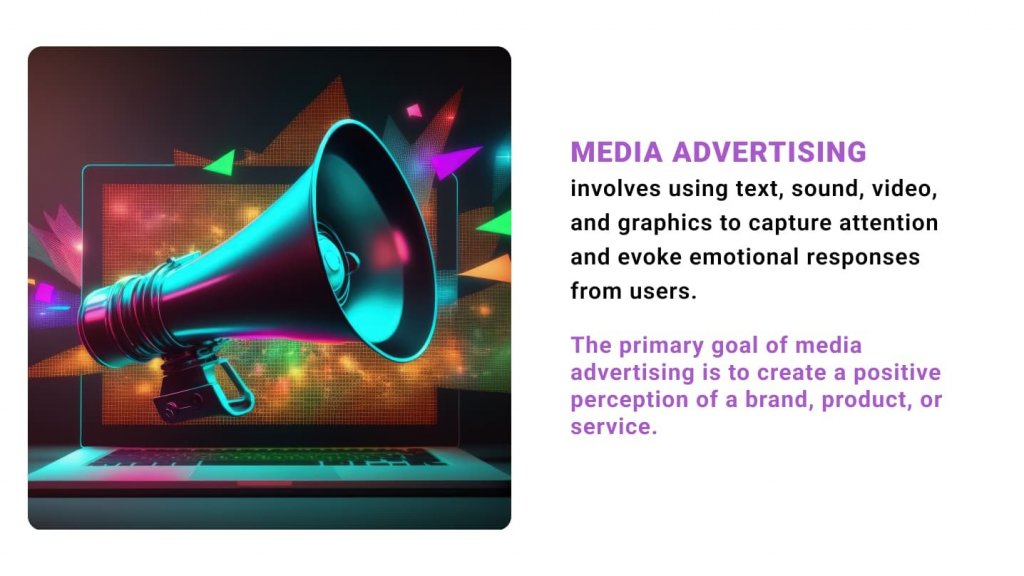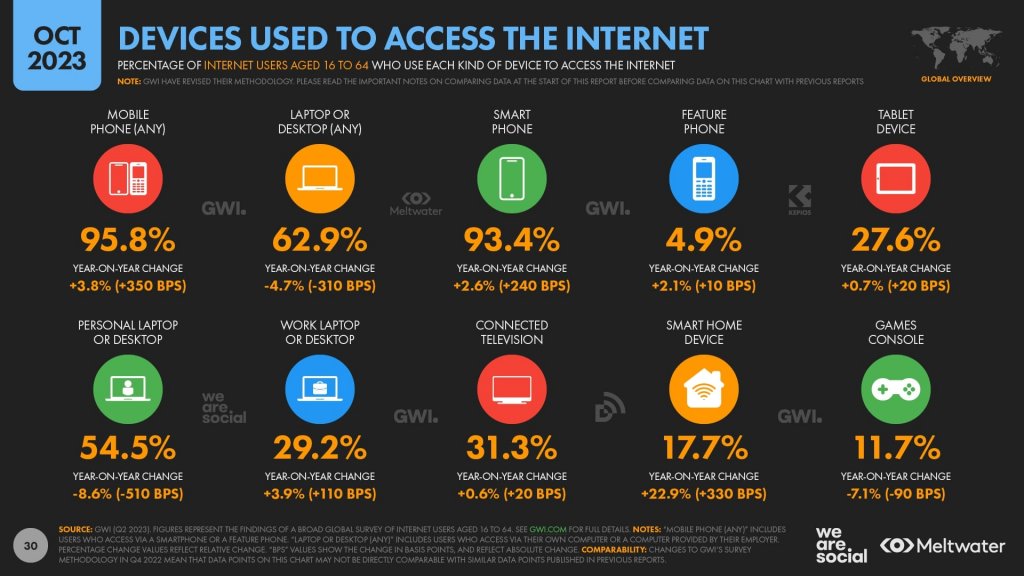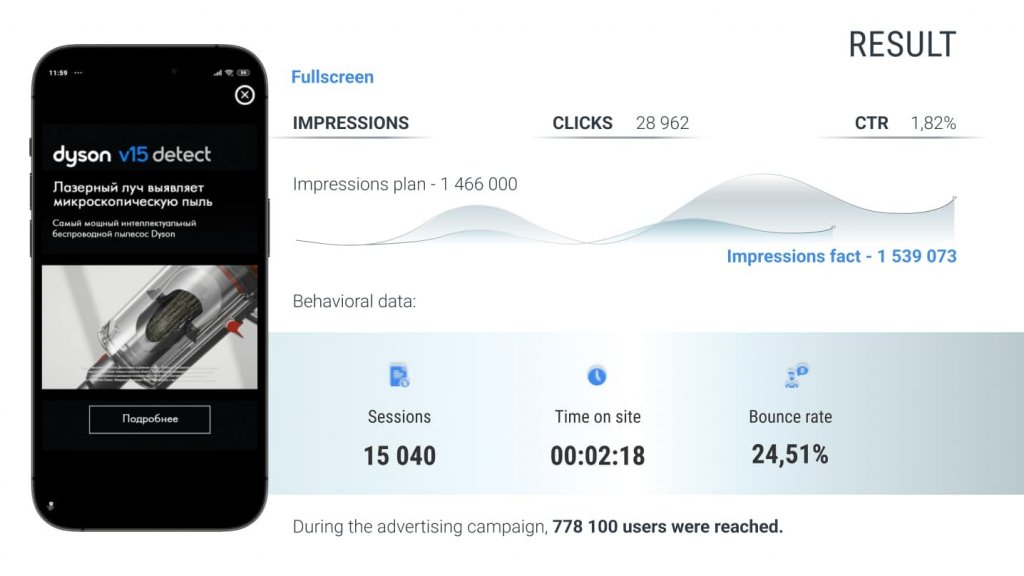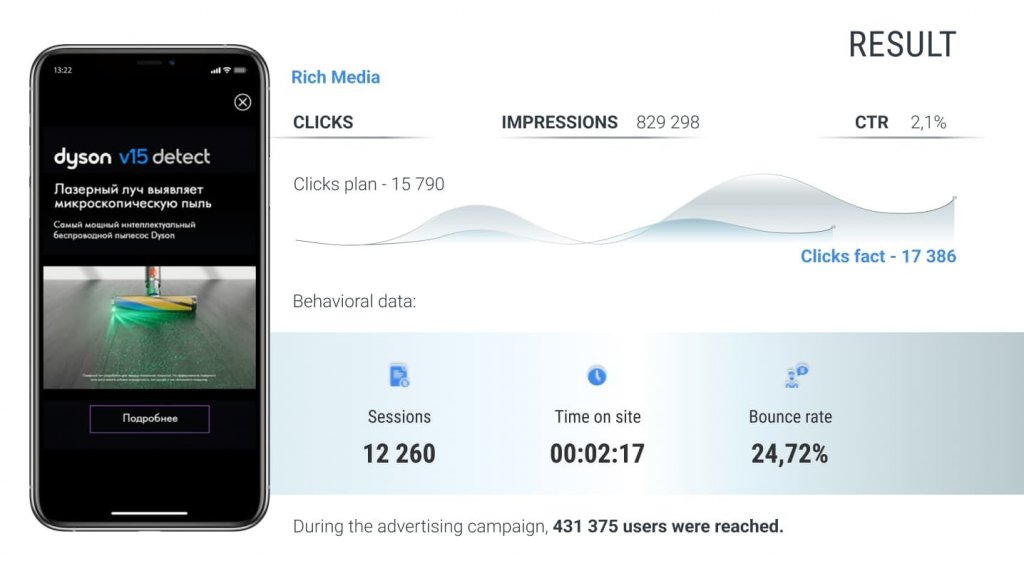How to increase website traffic with mobile advertising
Many website owners are concerned with how to increase website traffic. After all, it’s widely known that good traffic improves key metrics and contributes to sales growth.
Below, we answer the question of why website traffic is necessary, discuss popular traffic channels, and demonstrate how to attract users to a site using mobile advertising.
What is website traffic and why is it important
Website traffic is the number of visitors who come to a web resource within a specific period.
Users can arrive from various sources, such as search engines, social media, or different internet platforms. Direct visits, where users independently enter the website’s name into the search bar, are also common.
The combined traffic from all sources equals the overall website visitation.
Why is website traffic important for a brand?
Attracting visitors is a pivotal objective for any web resource. High-quality targeted traffic helps companies expand their customer base, enables online stores to boost sales, and allows informational portals to generate more revenue through advertising.
However, it’s crucial to understand that in attracting visitors, it’s not just about the numbers. The interaction between users and the platform holds significant value.
For instance, a prolonged session on a website often signifies a user’s interest in the provided information. Such a user might become a loyal customer in the future, emphasizing the importance of establishing a connection with them early on.
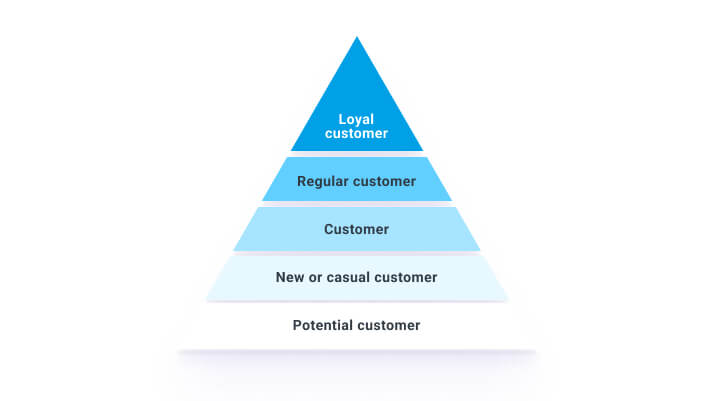
Additionally, an increase in traffic can:
- Raise brand awareness and market positioning.
- Facilitate audience growth and attract new potential customers.
- Enhance conversion rates, turning visitors into customers or subscribers.
Separately, it’s important to note that the purpose of attracting users to a website is not solely about achieving good metrics. Creating brand value through quality content and company interaction with the audience is also important.
Traffic channels
In the digital environment, there are various methods of attracting traffic. Popular traffic channels include:
- Organic
- Direct
- Referral
- Advertising
- Media
- Email Campaigns
- Social Media
- Organic Traffic
Organic traffic is visitors that come after conducting an internet search. They come through search engines such as Google, Bing, and Yahoo.
To elevate a website’s ranking in organic search results, experts recommend implementing search engine marketing (SEM) strategies and search engine optimization (SEO) methods.
Both digital strategies aid in attracting more visitors to a website and enhancing its overall visibility in the online sphere.
- Direct Traffic
Direct traffic refers to visits to a website when users enter the site’s URL directly into the browser’s address bar. This type of traffic also includes clicks on bookmarks or browsing history links within the browser.
Direct visits indicate that the user is already familiar with the website or its content. They navigate directly to the site without relying on search engine suggestions or other referral sources.
- Through Social Media
Social media platforms are excellent for increasing traffic as they gather a vast audience. According to the latest data from DataReportal, since 2021, there has been a consistent growth in the number of new users. For instance, from July to October 2023, this growth amounted to 1.6%.
Social platforms indeed represents a significant traffic source. It allows for effective brand page management, active engagement with the audience, and prompt sharing of current updates.
Furthermore, social media platforms offer the opportunity to utilize paid advertising for posting content or collaborating with influencers.
- Through Email Campaigns
Email campaigns are essential for communicating with existing customers. Their aim is to retain the audience and encourage them towards repeat purchases.
Note that emails are sent only to those who have agreed to receive such information and have provided their email addresses. This helps in respecting users’ personal information, making the newsletters more targeted, anticipated, and engaging.
- Media Traffic
Media traffic refers to visitors who arrive at a website through links from sources of media advertising. This includes clicks on audio ads, banners, or videos placed on third-party websites via media networks.
Such advertising materials attract audience attention and direct them to a specific platform, aiming to increase site visits and attract new visitors. This type of traffic helps attract users from various internet advertising sources, increasing the website’s visibility and reaching a new audience.
By the way, ad impressions are possible thanks to programmatic technology. A particularly popular format of advertising today is within mobile applications.
Incidentally, the BYYD platform has been involved in media advertising for over 8 years. During this time, we have executed numerous successful mobile campaigns. As a result, new audiences have been introduced to brands, and overall user perception of the product has improved.
Read our case studies and register on the platform to start a successful media campaign with us!
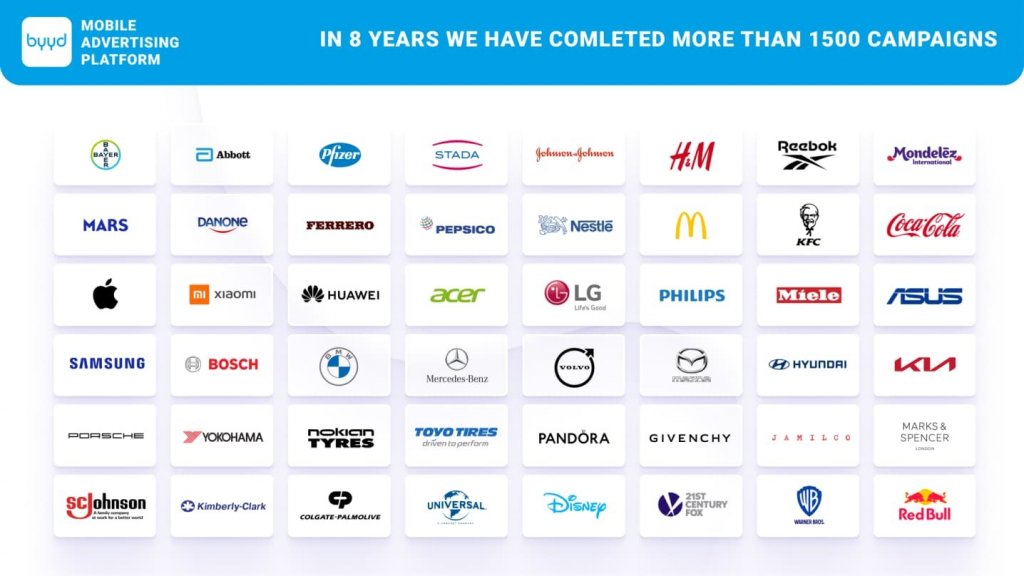
Utilizing mobile advertising to drive website traffic
Undoubtedly, having an omnichannel approach plays a vital role in increasing website traffic. Effectively utilizing social media, email, and other marketing channels only enhances the platform’s visibility and attractiveness to the audience.
However, employing mobile advertising opens up even greater opportunities for boosting website traffic.
Firstly, in-app advertising proves effective due to the widespread use of mobile devices. According to data from Digital 2023 October Global Statsot, 93.4% of individuals surveyed worldwide utilize smartphones for their daily tasks.
Moreover, the advantage of mobile advertising lies in its precise targeting parameters. This capability enables the delivery of advertisements directly to the target audience, thereby improving conversion rates and attracting new visitors to the web resource.
How mobile advertising increases website traffic
Simply and effectively. A user sees the creative content within the app, gets interested, and proceeds to visit the website. Subsequently, they engage with the platform and perform the desired action that the advertiser intends.
By the way, our optimization and analytics system allows tracking user activity on the site. This helps evaluate the campaign’s effectiveness and the overall success of the promotion.
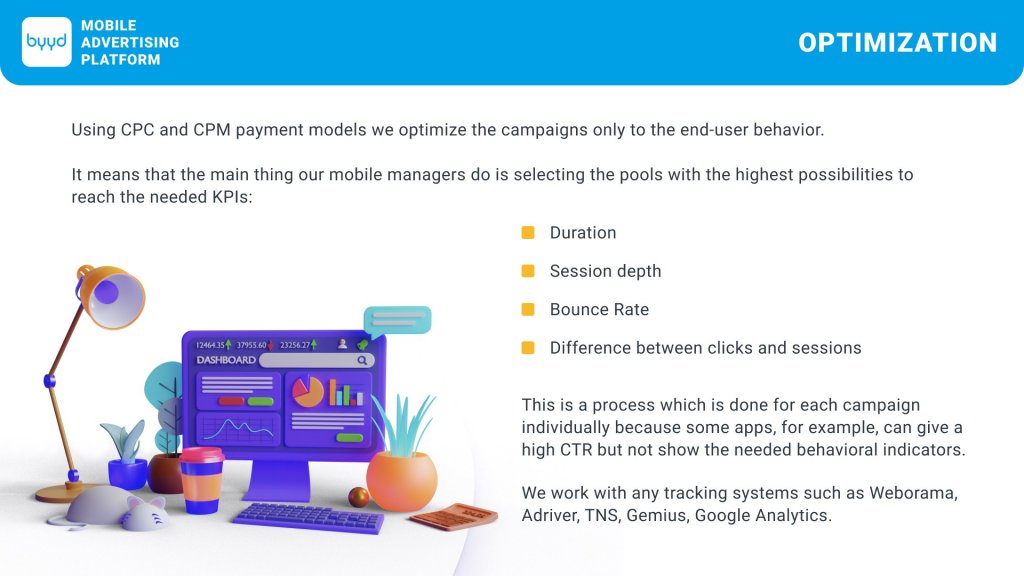
Consider Dyson brand as an example
One of the objectives of mobile advertising was to attract users to the brand’s target landing page.
To reach our target audience, we focused on seven user groups with unique interests. We utilized the following themes: electronics, real estate, above-average income, business, beauty, travel, shopping.
The advertising campaign was optimized using statistics from the BYYD platform in tandem with Google Analytics. During the campaign, we selected applications that demonstrated the following superior post-click performance metrics:
- Low bounce rates
- Extended website session durations
- Increased depth of website engagement
- Successful goal achievement
When promoting the brand, we implemented two advertising formats: full-screen banners and Rich Media banners. Using both formats allowed us to get a high CTR and a long session on the site.
In conclusion, attracting traffic is a challenging task. It’s crucial to utilize popular traffic channels, including media advertising. It not only contributes to improving website metrics but also fosters user loyalty to the brand.
Interested in launching mobile programmatic advertising? Then you’re on the right track. Reach out to us, and we’ll help drive traffic and achieve your goals.
Was it useful? Then share it with your friends and colleagues!
For consultations and cooperation – contact through the form on the site.
